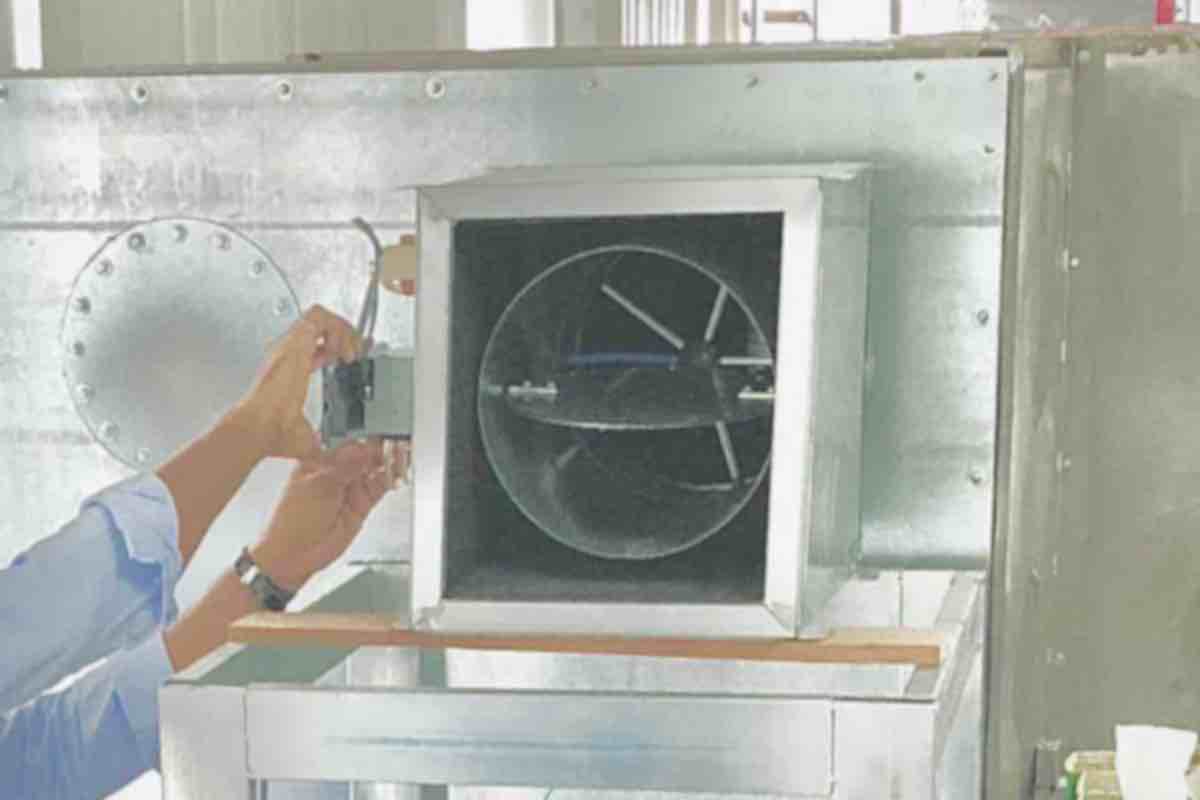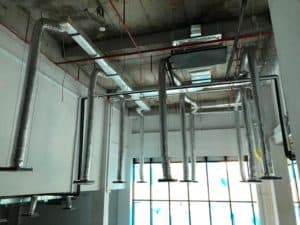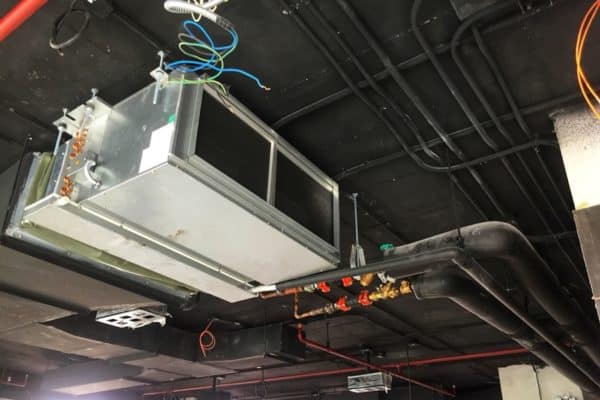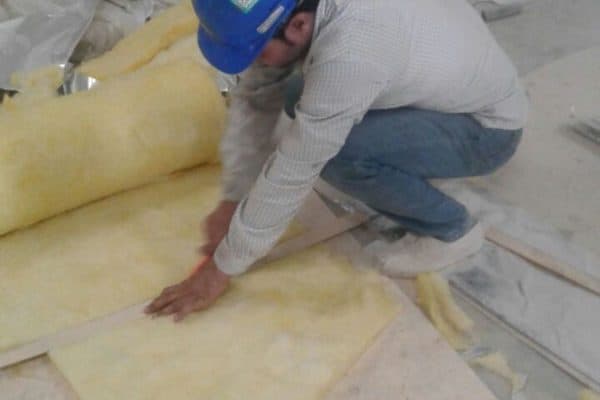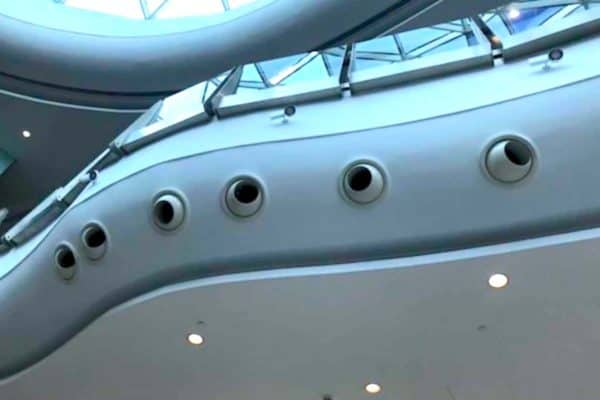What is VAV in HVAC?
If you’re working in the HVAC industry for a while, you probably heard the word VAV. So, what exactly is VAV in HVAC, how does it work and why do we use a VAV?
VAV stands for variable air volume. VAV is also known as VAV box which the full form is variable air volume box. VAV is used to maintain a more precise room temperature by regulating the amount of airflow supplied to the room.
New buildings nowadays often use VAV boxes in their HVAC system in an effort to reduce operating costs while providing better thermal comfort.
What is the Function of VAV?
VAV or VAV boxes are used to keep a room at constant temperature (ideally) by regulating the amount of supply airflow. Besides, they also enable a building to have different thermal zones.
Before the use of VAV boxes, the HVAC system in buildings delivers a fixed amount of airflow to every room. The amount of airflow is fixed during the commissioning stage where air balancing work is performed.
The contractor who does the air balancing work follows the design airflow to balance the supply air and the design airflow is determined and estimated by the consultant during the design stage.
Related post: HVAC Air Balancing: Basics, Tools & Procedures.
How much airflow is to be supplied to a particular room is depending on the cooling load requirement. For instance, if the room needs 9000 BTU of cooling capacity, the airflow requirement is around 250 CFM.
As you might have guessed already, the consultant can’t possibly know exactly how much airflow is actually required when the building is occupied because there are too many variables involved.
So, even when the amount of airflow in each room is perfectly balanced, many rooms will still complain about overcooling or undercooling problems. For instance, the number of people in a room increased from 5 persons to 15 persons due to a birthday celebration.
Now, because the amount of supply airflow is fixed, the room may not have sufficient cooling given the number of people in the room is beyond expectation.
Hence, engineers use VAV boxes to solve the problem.
With VAV boxes, the airflow and thermal comfort in each and every room can be controlled and maintained individually. Furthermore, the entire HVAC system is running more efficiently because the cooling load is optimized.
How a VAV Box Works?
A VAV box is called a box because it looks like a metal box. It is usually in square or rectangular shape and it has a damper blade inside that can open/close to control the amount of supply airflow.
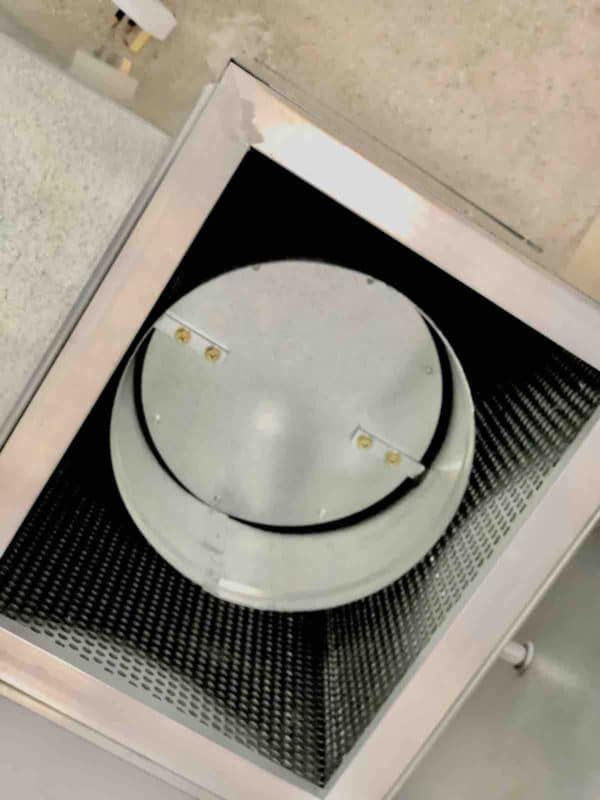
A VAV box always has a modulating actuator. The actuator is used to drive and control the damper blade position thereby regulating the amount of supply airflow. The perforated metal sheet you saw in the above photo is used to secure the fiberglass insulation behind for noise suppression.
Related post: 4 Types of Actuators in HVAC (Damper & Valve).
On the other side of the VAV box is a thermostat. The thermostat is a wired type and mounted to the wall at a comfortable height from the floor for human interaction. The location of the thermostat is where the airflow needs to be regulated.
For example, if an office floor has 10 rooms. A typical VAV system will have 10 VAV boxes and 10 thermostats. One thermostat must be placed in each room but not necessarily for a VAV box. Rather, VAV boxes usually follow the layout of the supply air duct.
However, the supply air diffuser in each room must be connected to its corresponded VAV box and thermostat. So, each room will have a different airflow supply based on the needs.
The most important aspect of a VAV box is accuracy. Low air leakage, precise flow sensor and actuator are critical to the selection of VAV boxes.
Also, VAV boxes are often connected to a building management system (BMS). So, building operators can monitor the supply airflow rate of every VAV box in real-time.
What is the Difference Between VAV and VRF?
Some people get confused by the term VAV and VRF. It is understandable because they sound similar. However, they are two very different elements in HVAC. So, what is the difference between VAV and VRF?
VAV stands for variable air volume. VRF stands for variable refrigerant flow. VAV is a component of HVAC ductwork for airflow control while VRF by itself is an entire HVAC system that regulates the amount of refrigerant flow in each evaporator.
Although VAV and VRF are two different things, their objective is the same which is to improve the efficiency and effectiveness of air conditioning systems.
Related post: VRF Working Principle (Air-cooled & Water-cooled).
Applications
VAV is mostly used in HVAC chilled water systems. Since chilled water systems are more efficient than other types of HVAC systems, adding VAV boxes will further improve their efficiency.
In a chilled water system, the amount of chilled water flowing in each evaporator (air handling unit or fan coil unit) is typically controlled by a pressure-independent balancing control valve (PIBCV) for total cooling capacity control.
However, the evaporator serves multiple rooms at once. So, a VAV box is used to control the cooling capacity in each room.
On the other hand, VRF systems are used when the total cooling capacity is relatively lower. Then, VRF systems usually don’t use ductwork for their evaporators. So, instead of having one or more supply air diffusers in each room, one or more evaporators are installed.
Because VRF systems are smaller in total cooling capacity, their evaporators are also smaller in capacity. Hence, it is feasible to install one evaporator in each room.
VRF systems control the cooling capacity of each evaporator by regulating the amount of refrigerant supply. Since one evaporator is installed in each room, the cooling capacity of every room is also controlled by the amount of refrigerant supply.
As you can see, VAV and VRF are two very different elements of HVAC. However, they both have the same goal but different applications.
Lastly, consider my HVAC Begin (eBook) if you’re a beginner and you want to have a foundational knowledge in HVAC. But, if you have a year or two of experience, then I would suggest you consider my HVAC Basics (eBook). Nonetheless, I encourage you enroll in my HVAC Beginner Course: 10 Days to Become Competent in HVAC if you want to equipped yourself with a complete set of basic HVAC skills.
HVAC Beginner Course
Learn the most basics and foundational HVAC skills including cooling capacity calculation, equipment selection, duct sizing, pipe sizing, exhaust fan sizing, controls, electrical and more.
If you have anything to add (or ask) about this topic, leave a comment down below!


